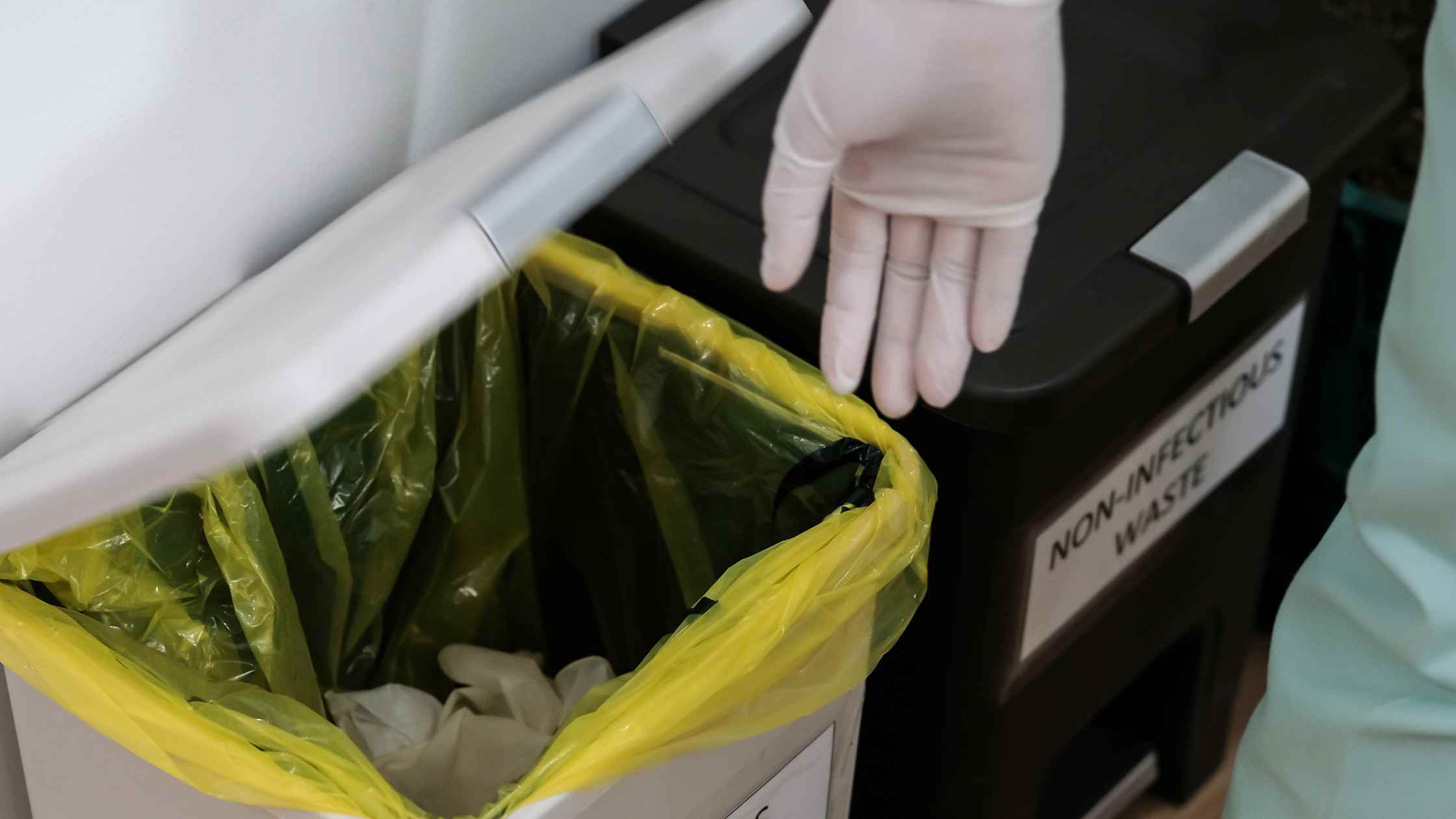
In veterinary practices, waste management is a crucial aspect of maintaining a safe and healthy environment for both animals and humans.
Understanding which types of veterinary waste are hazardous is essential for proper disposal and regulatory compliance.
In this blog, we will explore the different types of hazardous veterinary waste, answer common questions, and provide guidance on safe disposal practices.
Table of Contents
- Understanding Hazardous Veterinary Waste
- What is Veterinary Clinical Waste?
- Best Practices for Managing Hazardous Veterinary Waste
- Conclusion
Understanding Hazardous Veterinary Waste
Veterinary waste comes in various forms, and some of it can be hazardous. Here are the main types of hazardous waste found in Veterinary practices.
Sharps Waste
Sharps waste includes needles, syringes, scalpels, and other sharp objects that can cause injury or transmit infectious diseases. Proper disposal involves using puncture-resistant sharps containers that are marked for biohazardous materials.
Pharmaceutical Waste
Pharmaceutical waste, which includes expired, unused, or contaminated medications such as antibiotics, anesthetics, and controlled substances, is a significant component of medical waste.
If not disposed of properly, these substances can be harmful to both the environment and human health. To ensure safe disposal, use designated take-back programs or hazardous waste facilities.
Chemical Waste

Chemical waste includes disinfectants, cleaning agents, and diagnostic reagents. These chemicals can be toxic, corrosive, or flammable. Follow local hazardous waste regulations for disposal, ensuring chemicals are not poured down the drain or thrown in regular trash.
Infectious/Biohazardous Waste
Infectious or biohazardous waste comprises materials contaminated with blood, body fluids, tissues, or cultures from infectious agents. This waste must be disposed of in biohazard containers and managed through incineration or specialised biohazard waste disposal services.
Radiological Waste
Radiological waste includes items from radiological procedures, such as x-ray films, radioactive isotopes, and contaminated protective gear. Exposure to this waste can be harmful, and it requires disposal through specialised radiological waste services.
Cytotoxic Waste
Cytotoxic waste originates from chemotherapy treatments and includes used vials, syringes, and personal protective equipment (PPE) contaminated with cytotoxic drugs. These substances are highly toxic and carcinogenic, requiring specific containers and disposal methods.
Animal Carcasses and Tissues
Animal carcasses and tissues, especially those from animals treated with hazardous substances, can spread disease or contamination. Proper disposal involves incineration or rendering, following local regulations to ensure they are not mixed with regular waste.
What is Veterinary Clinical Waste?

Veterinary clinical waste refers to waste generated from veterinary clinical activities that may pose a risk to health or the environment. This includes:
- Sharps waste: Needles, scalpels, and other sharp instruments.
- Pharmaceutical waste: Expired or unused medications.
- Chemical waste: Cleaning agents and diagnostic reagents.
- Infectious waste: Contaminated materials with blood, tissues, or infectious agents.
- Cytotoxic waste: Waste from chemotherapy treatments.
- Radiological waste: Items from radiological procedures.
Proper management of veterinary clinical waste is essential to prevent the spread of disease and environmental contamination. This involves using appropriate containers, following disposal regulations, and ensuring staff are trained in handling these materials safely.
Best Practices for Managing Hazardous Veterinary Waste

- Segregation: Separate hazardous waste from non-hazardous waste at the point of generation to prevent cross-contamination.
- Labeling: Clearly label all hazardous waste containers to indicate their contents and ensure proper disposal.
- Training: Provide training for all veterinary staff on proper waste handling, segregation, and disposal procedures.
- Compliance: Follow all local, state, and federal regulations regarding hazardous waste disposal.
- Documentation: Keep accurate records of hazardous waste disposal, including quantities, types of waste, and disposal methods.
Conclusion
Proper management of hazardous veterinary waste is crucial for protecting public health, animal health, and the environment.
By understanding the different types of hazardous waste and following best practices for disposal, veterinary practices can ensure safe and responsible waste management.
Regular training, compliance with regulations, and meticulous documentation are key to an effective hazardous waste management program.
By taking these steps, veterinary practices contribute to a safer and more sustainable environment.







